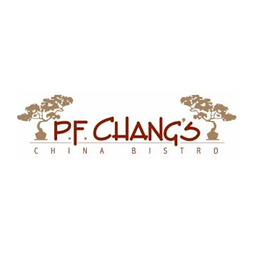Make First Impressions Count withPressure Washing from Tidal South
If you're an entrepreneur, you know how important image is for your brand and business. In many cases, you have one chance to make an excellent first impression. If your warehouse, apartment complex, or storefront is grimy and unattractive, chances are you're leaving money on the table. Think of it from the customer's standpoint: If a business owner doesn't take the time to clean walkways and other high-traffic areas around their location, they probably won't invest time and money into selling a great product.
Every building, entryway, parking lot, walking path, or storefront represents a chance for your business to impress customers. With commercial pressure washing, your business is seen as welcoming, orderly, and detail-oriented. That's why commercial pressure washing in West Ashley, SC, is so crucial when it comes to image, upkeep, and maintenance.
Much like you would clean the interior of your building, your exterior needs to be cleaned too. Failing to do so means making less money and potentially losing long-term customer relationships. Pressure washing for your commercial property saves time, money, boosts brand loyalty, and also serves as a great marketing tool.
At Tidal South Pressure Washing, our goal is to help hardworking business owners, property managers, and other entrepreneurs manage their building's exterior appearance with superior, long-lasting pressure washing. We're proud to take care of all the hard work involved with pressure cleaning. That way, the business owner can focus on what they do best: serving clients, growing their business, and driving revenue.

Washing Services
- Make First Impressions Count with Pressure Washing from Tidal South
- The Tidal South Difference
- What are the Benefits of Business Pressure Washing in West Ashley, SC?
- Top Quality Apartment Complex Pressure Washing in West Ashley, SC
- The Surprising Benefits of Apartment Complex Pressure Washing
- Protect Your Home with Residential Pressure Washing in West Ashley, SC
- Benefits of Pressure Washing Your Home
- Trust Tidal South for All of Your Pressure Washing Needs
Service Areas
Tidal South has extensive experience in commercial pressure washing, working closely with property managers and contractors for maintenance and new construction projects. Our crew utilizes top-quality commercial equipment, including:
- Industrial Pressure Washing Trailers
- High-Output Pressure Washers
- Integrated Burners for Hot Water
- Advanced Chemical Solutions
- Large Water Tanks for Remote Site Pressure Washing
Our commercial clients take their jobs seriously. They have high standards, and as such, we provide the highest-quality, most efficient pressure washing options to exceed those expectations.
If you're a property manager or business owner looking for relief, your property is in good hands with Tidal South Pressure Washing. Some of the most common pressure washing options we offer to commercial customers include:
- Apartment Pressure Washing
- Condominium Pressure Washing
- Parking Garage Pressure Washing
- Window Cleaning
- Shopping Center Pressure Washing
- Retail Store Pressure Washing
- Fleet Vehicle Pressure Cleaning

The Tidal South Difference
At Tidal South Pressure Washing, our team is committed to making your business or property shine. Unlike mediocre "big box" brands that only offer cookie-cutter solutions, we tailor our commercial pressure washing services to your needs. With over 10 years of professional pressure washing experience, we believe the customer should come first, which is why we prioritize customer service, value, and professionalism.
We only employ the best and brightest pressure-washing experts, who work extra hard to exceed expectations in an efficient, streamlined manner. No matter the size of your commercial or industrial cleaning needs, Tidal South has the team to handle it.
For new clients, we offer a free on-site pressure washing demonstration and consultation for any property you may have in South Carolina. If you have properties outside of the state, we're happy to work with you as well. Monthly, quarterly, and even annual contracts are available, and we aim to keep your property looking its best all year long with minimal effort on your end.
When it comes to pressure washers in West Ashley, SC, Tidal South is the top choice in West Ashley and the metro area because:

We're Reliable and Experienced
With over a decade of serving business owners, property managers, construction sites, and more, our team takes pressure washing to the next level of excellence. Industrial-grade equipment, expert pressure washers, and unwavering commitment to the customer make Tidal the top choice for your large-scale project.

We're Licensed and Insured
How can you partner with a pressure washing business that doesn't look out for your best interests? Tidal South carries full liability and equipment insurance and has the proper permits and licenses for every service we offer.

Our Customers Come First
When you trust Tidal Pressure Washing, you don't have to worry about annoying upsells or confusing fine print. Our services are packed with value at cost-conscious prices, so you can make your business or property look great without breaking the bank. We like to look out for our clients because, without them, we wouldn't exist. There's a reason why we have so many positive reviews and testimonials!

We Value Attention to Detail
Having completed hundreds of commercial pressure washing projects, we know that no two clients have the same needs. If you have a specific pain point or special request, we go the extra mile to ensure it's taken care of. Our attention to detail helps us provide a superior product to you and your business.
What are the Benefits of Business Pressure Washing in West Ashley, SC?
As metro West Ashley's top choice for pressure washing, Tidal South has the team, tools, and resources you need to keep all exterior aspects of your business looking great year-round. From high-traffic walkways to hard-to-reach areas, we keep your exterior surfaces clean and attractive, which boosts curb appeal and increases its lifespan.
Keeping the exterior surfaces of your business clean and tidy is a benefit all on its own, but there are many more advantages of commercial pressure washing to consider. Here are just a few:
Increased Property Value
Especially in terms of selling and buying real estate, commercial pressure washing can boost your property's value. Our commercial services are excellent for curb appeal, but if you keep a record of our pressure washing, window cleaning, and building washing services, your property value may go up, adding value to your investment over time.
More Money Saved
Business owners and property managers are quick to replace what they think are unusable items with new ones. However, many times, items like signs, awnings, and roof shingles just need a good professional cleaning. Instead of replacing high-dollar items, call Tidal South. Our exterior cleaning services for businesses are often much cheaper than buying brand-new products.
Sanitation
Most business owners would agree that their employees and customers deserve a healthy, clean place to work and shop. Our cleaning and pressure washing services help remove algae, mold, pollen, grease, and mildew from your commercial building's exterior. That way, your patrons and employees are happy, and you can avoid unflattering health inspection reports.
Reputation
It's critical for business owners and property managers to maintain a great reputation. If the front entrance to your business is dilapidated and filthy, your customers may assume that management has “checked out." This often raises questions about the business owner and whether or not they genuinely care for their customers. Just like registers and bathrooms, your property's exterior features should also be clean.
Prevent Liability
This is especially true for food service businesses. Oil spills, food splatters, and unsightly sidewalks aren't just ugly. They can be dangerous. All it takes is one slip-and-fall accident to ruin your good name and cost your business untold amounts of money in court.
Free EstimateCall For Service
 843-696-7637
843-696-7637
Top Quality Apartment Complex Pressure Washing in West Ashley, SC
Owning or managing an apartment complex or condominium community is a time-consuming, multi-faceted task filled with stress and high demands. You're not just dealing with your tenant's ever-changing issues - you must beautify and maintain the property to keep it functional and safe. After all, no apartment owner wants to live in a dilapidated, dirty complex. With so many moving parts, it makes sense to bring in professionals who can handle your pressure washing needs while working with your schedule.
Tidal South delivers a full suite of apartment complex pressure washing services that ensure your property is clean, attractive, and inviting for every resident in your community. Property managers and apartment complex owners choose Tidal South for their pressure washing needs because we prioritize the following:
- An unwavering commitment to pressure washing quality and customer satisfaction
- A problem-solving mindset. We like to work proactively, not reactively
- Reliable apartment complex pressure washing
- Hiring highly-trained, licensed, insured pressure washing technicians
- Seamless, efficient solutions that make your job easier
- Beautiful, long-lasting results

Having served apartment complex owners for years, we step in when you need us the most. Some of our apartment and condo pressure washing services include:

Concrete Cleaning for Apartment Complexes
Our highly-effective pressure washing services for apartments cleans oil, gum, grease, grime, dirt, and just about everything else. We can also pressure wash your community's sidewalks, driveways, parking lots, and much more.

Building Cleaning for Apartment Complexes
Our washing methods help remove mildew, mold, dirt, and stains in a safe manner for your buildings and tenants. By cleaning the exterior of your apartment building, you can boost curb appeal, maintain siding quality, and protect your tenants' health.

Roof Cleaning for Apartment Complexes
We use safe washing tactics to clean the roofs in your apartment community. This process protects your shingles and eliminates those ugly black streaks that ruin your shingles.
The Surprising Benefits of Apartment Complex Pressure Washing
Why let your walkways, parking lots, gutters, and siding accrue dirt, grime, mold, and algae? When residents and guests complain about how dirty their apartment community is, you must act quickly. Tidal South Pressure Washing is here to serve you with streamlined, efficient pressure washing services that keep tenants happy.
Here are just a few surprising benefits of apartment complex pressure washing:

Bring in New Tenants
If you want to attract new residents to your apartment complex, make a great first impression. One of the best ways to do that is with professional pressure washing. As an owner or landlord, you need to show future residents how beautiful their soon-to-be community is. That's true even if you're not charging a lot for rent. Nobody wants to live in a filthy-looking apartment complex.

Reduce Liability
As a property manager or landlord, you must abide by your tenant's rights. You have to provide them with a habitable place to live. As such, you must keep your apartment complex clean and free of health hazards like mildew and mold. To avoid liability and litigious action, include pressure washing from Tidal South on your maintenance checklist.

Increase Apartment Building Lifespan
Even the most well-built apartment buildings will suffer from wear and tear with time. Exposure to the elements, especially in areas with a lot of rain and snow, may cause your complex to degrade. When pollutants fester, it accelerates that degradation. By getting rid of those pollutants with pressure washing, you can extend your property's lifespan.
The Surprising Benefits of Apartment Complex Pressure Washing
Though Tidal South Pressure leads the field in commercial pressure washing, we're also proud to offer premium pressure washing for homeowners too.
As one of the premier home power washing companies in metro SC, we're passionate about restoring the outside appearance of homes. We guarantee your satisfaction by using the highest-quality power washing tools and proven techniques to clean your home. Whether you're trying to sell your house or just need to update its look, we're here to help. Give us a call today to learn more about the Tidal South difference.
Some of the most popular residential pressure washing services we offer include:

Pressure Washing

Window Cleaning

House Washing

Gutter Cleaning

Concrete Cleaning
More Service For Call
 843-696-7637
843-696-7637

Benefits of Pressure Washing Your Home
A lot of homeowners believe they can spray down their home with a hose and get the same effects as pressure washing. While DIY cleaning methods are great for minor issues, residential pressure washing is much more comprehensive and effective. It's about more than removing a little dirt from your siding or your gutters.
Here are a few of the most common benefits homeowners enjoy when they use Tidal South for their pressure washing:
Prevent Property Damage
So you've got mold or moss growing on your home's exteriors. What's the big deal? As it turns out, grime, moss, dirt, and other built-up substances can cause corrosion, running your home's exterior surfaces. When left unaddressed, that corrosion can seep into the materials under your concrete sealant or paint, like the wood on your deck. Substances like dirt also tend to accumulate in the small crevices that every home has. Out of reach of the wind and rain, this type of grime can add up for years until it becomes a bacterial breeding ground. Tidal South's residential pressure washing removes dirt, grime, and mold while hitting those impossible-to-reach crevices that damage your home.
Save Money
When you think about all the damage that pressure washing prevents, it makes sense that you'll be saving money when you hire Tidal South. Having your home pressure washed regularly is usually less expensive than the repairs you'll need to pay for if you were to avoid keeping your property clean.
Prep Renovation Surfaces
As you probably know, you can't paint over a dirty surface. If you're thinking about applying a new coat of paint to your home or even adding a deck or new room, pressure wash first. Pressurized washing helps clean your surfaces and can remove peeling paint and other defects that may affect the surface you're working on.
Free Estimate
Trust Tidal South for All of Your Pressure Washing Needs
Keeping your home or business looking its best is a great feeling. But pressure washing goes beyond aesthetics. It protects your property from unnecessary damage, keeps your family or employees happy and safe, and even saves money, time, and stress.
Remember - a thorough pressure wash isn't an extravagance. It's a necessity. Let the friendly professionals at Tidal South Pressure Washing handle the hard work for you. Our goal is your 100% satisfaction, whether you're tending to your home or protecting your business.
Have questions about our process? Contact our office today. We'd be happy to answer your questions and explain how we can solve your pressure washing needs.

Call For Service
843-696-7637Latest News in West Ashley, SC
West Ashley launches South Carolina's first edible forest, tackling food insecurity
Claire Weberhttps://abcnews4.com/news/local/west-ashley-launches-south-carolinas-first-edible-forest-tackling-food-insecurity-food-deserts-charleston-charleston-county-abc-news-4-wciv-2024
CHARLESTON, S.C. (WCIV) — West Ashley is home to South Carolina’s first-ever food forest.Funded through a $50,000 grant from the South Carolina Forestry Commission, Charleston Parks Conservancy launched the project with the City of Charleston and other partners to provide free and nutritious options in areas struggling with food insecurity.“In the end, this will end up producing about 30,000 pounds of fresh organic produce, in a community that doesn't have great access to healthy foods,” said Darlene Hea...
CHARLESTON, S.C. (WCIV) — West Ashley is home to South Carolina’s first-ever food forest.
Funded through a $50,000 grant from the South Carolina Forestry Commission, Charleston Parks Conservancy launched the project with the City of Charleston and other partners to provide free and nutritious options in areas struggling with food insecurity.
“In the end, this will end up producing about 30,000 pounds of fresh organic produce, in a community that doesn't have great access to healthy foods,” said Darlene Heater, executive director of Charleston Parks Conservancy.
Rows of more than 75 plants, ranging from nut trees to berry bushes, line Mulberry Park in West Ashley.
READ MORE: "Hendrick Automotive Group donates $100,000 to Lowcountry Food Bank."
The first in the state, Charleston’s new food forest will provide free, fresh produce to those who need it most.
“What's beautiful about a food forest is that anybody can access it at any time. So, you're not relying on someone's opening hours or the availability to be able to go to a source to get food,” Heater said. “It is in the community and available to the community for whoever needs it.”
The forest features seven tiers of agriculture and will begin producing roughly $25,000 worth of food annually in the first five years.
The conservancy has worked with several local groups, like Slow Food Charleston, to make the flagship project come to life.
“To help bring good, clean, and fair agricultural products to our community, to communities that may not have access to them. To have them engage in a manner that is enriching,” said Kellie Holmes, co-chair of Slow Food Charleston.
READ MORE: "Hansley's Free Fridge project is fighting food insecurity in South Carolina."
Accessibility is at the root of it all.
The food forest is in the Ardmore neighborhood, a lower-income area that could be categorized as a food desert. It isn't an uncommon issue. Around 40.5 million Americans live in USDA-designated food deserts nationwide.
“Mulberry Park is an ideal location. It is a community that, though it has some grocery stores in its vicinity, they are not necessarily grocery stores that everyone in the community can afford to go to,” Heater explained.
Located off the Bikeway, Charleston Parks Conservancy hopes the food forest will feed not only its closest neighbors but the greater West Ashley and Charleston area.
Planting the seeds of an edible food forest in West Ashley, SC's 1st free-of-charge grove
David Ferrara dferrara@postandcourier.comhttps://www.postandcourier.com/features/home_and_garden/west-ashley-food-forest-charleston-ardmore/article_feae0564-dfdc-11ee-a23d-67d50638e6c3.html
Pluck an apple, cut some herbs or pick some berries at South Carolina's first food forest, a new free-of-charge grove being built in the Ardmore community.With an expected seven stories of canopies and an estimated $25,000 annually in produce by its fifth year, Charleston Parks Conservancy director Darlene Heater acknowledged it's a remarkable undertaking for the local nonprofit."It's creating access ...
Pluck an apple, cut some herbs or pick some berries at South Carolina's first food forest, a new free-of-charge grove being built in the Ardmore community.
With an expected seven stories of canopies and an estimated $25,000 annually in produce by its fifth year, Charleston Parks Conservancy director Darlene Heater acknowledged it's a remarkable undertaking for the local nonprofit.
"It's creating access in food deserts but creating it in a way that is low-maintenance and little barrier for people to be able to participate in it," Heater said.
The food forest on Mulberry Street near Grech Street, and off the West Ashley Bikeway, is being funded by a $50,000 grant from the South Carolina Forestry Commission.
While the conservancy is handling the horticulture, the City of Charleston's parks department is working to excavate the land, add pathways and install a new playground at the park. It is one of several conservancy projects this year, in addition to working with the city to manage 24 parks on the peninsula, on James Island and in West Ashley.
Parks Department director Jason Kronsberg compared the collaboration between the city, the conservancy and the community to a three-legged stool. The conservancy liaises with the neighborhoods, like Ardmore for the food forest, and then fundraises with them before going to the city to bring a project to life.
The food forest is intended to help the Ardmore neighborhood, recently identified in the Charleston parks master plan as a community of high need, along with the surrounding community.
Besides providing free access to produce, the forest can help people better understand where their food comes from, Kronsberg said. It's also an opportunity for folks to lend a hand with some maintenance.
"The parks are owned by everybody," Kronsberg said.
The project will not be without its challenges, though. As the weather in Charleston gets more severe, Heater said that the conservancy will need to tend to the forest carefully and make sure plants or produce don't wash away.
Teaching the community how to use — and not overuse — the one-of-a-kind forest will take time, too.
The conservancy plans to lean on its volunteer base to maintain the forest, such as harvesting, packing and sending excess produce to local nonprofits. There will be no constraints on harvesting to start, as to not adversely impact food accessibility, Heater said. Part of it will be trial and error, and much of the plan is flexible based on the demand the conservancy sees for certain produce.
"What we may learn is that this community really loves sweet potatoes but doesn't care as much about turnips," Heater said. "So let's look at how we can expand growing our sweet potato patch so that we can continue to serve the people adequately who most need it."
This spring will mark the first planting of the fruit trees, brambles and herbs. Heater said that best practices dictate not harvesting during the first year, so by the second year the conservancy expects to have herbs, mushrooms, brambles and possibly bananas to harvest.
By the fifth year, with an estimated 70 trees bearing fruit, Heater said she expects 10,000 pounds of produce.
The food forest comes two years after the adoption of a new Charleston parks master plan and months after the overwhelming approval of a bond referendum question last November.
"Citizens spoke loudly and clearly that they supported the referendum and improved park spaces," Kronsberg said. "Coming out of COVID, when parks became critical infrastructure, it was natural that there was that much support for a referendum."
As the Ardmore food forest begins to yield, relieving supply-chain issues might just become an additional perk. And in a world reshaped after the pandemic, the food forest is one project that shows how to branch out from the traditional park.
Get a weekly list of tips on pop-ups, last minute tickets and little-known experiences hand-selected by our newsroom in your inbox each Thursday.
There are many challenges to growing fruit, from soil quality to harsh climates for plants and, often, these plantings do not last a particularly long time. Yet there is hope to have fresh fruit in the landscape, and the way this is accomplished is by planting more unique and lesser-known fruit trees and shrubs. One shrub is not only a perfect choice for growing here, but it also has excellent ornamental value as well: the blueberry.
Blueberries are a group of plants usually in the Vaccinium genus, most of which are native to North America. They are members of the Ericaceae family, along with the Rhododendron genus that includes azaleas. There are dozens of species and even more cultivars of blueberries, making selection somewhat confusing.
That being said, there are two main types grown here in the Lowcountry. There is the southern highbush blueberry, V. corymbosum. This group has low chill hour requirements and has decent heat tolerances. Then there is the rabbiteye blueberry, V. virgatum, which is more adaptable to the state and is a perfect choice for the home garden. The rabbiteye blueberry is the preferred species here in the Lowcountry due to its adaptability, productivity and pest tolerance.
As mentioned previously, there is a major consideration when selecting the cultivar of blueberry: chill hour requirements. Chill hours refers to the number of hours below 40 degrees Fahrenheit the plant needs in order for flowers to develop. If the required number of hours is too high, then it would be unlikely the shrub will ever produce flowers or fruits in the Lowcountry. If the required number of hours is too low, then the flowering may commence too early in the year at the first sign of warm weather and thus be damaged by the subsequent frosts. Here, along the coast, the approximate number of hours is 400-600.
The other thing to keep in mind is that, while blueberries are considered self-fertile, fruit production increases with cross-pollination. Rabbiteye blueberries have issues with self-incompatibility, making cross-pollination necessary in order for better fruit development. Ideally, two or more cultivars are required for proper fruit production. Rabbiteye blueberries have the greatest degree of self-incompatibility, whereas southern highbush are better suited to be self-fertile — though it is still recommended to have two or more types.
Get a weekly recap of South Carolina opinion and analysis from The Post and Courier in your inbox on Monday evenings.
Growing and maintaining blueberries is relatively simple once they are established, but proper site selection is essential. Blueberry plants prefer well-drained, acidic soil to thrive. These are by far the most common issues with stunted blueberry plants. The pH recommendation for blueberries is between 4.5 and 5.5. A pH above a 6.0 can stunt the plant permanently. It is imperative to have a soil test done before planting to determine the pH. Once a shrub is stunted due to improper pH, the plant generally does not recover.
Pruning when first planted is paramount. This enhances survivability and encourages more vigorous growth the following year. It is also necessary to remove any shoot tips that have flower buds (swollen rounded buds) for the first couple of seasons. This spurs vegetative growth, since reproduction requires tremendous energy.
By the third season, there should be a multitude of shoots, which will greatly increase flower production. As the plants grow after being established, it is recommended to prune consistently to keep down insect issues as well as encourage healthy growth. The best time to prune established shrubs is from January to March, before the buds set.
One of the best aspects of this group of fruit-bearing shrubs is not only the ease of care and the overall value added to any landscape but the ecological benefit they provide. As mentioned previously, blueberries are native to North America, and with that comes important relationships with native pollinators. Blueberries, in particular, have a group of bees, known as blueberry bees. These bees need the flowers of the Vaccinium genus. The importance of planting native plants cannot be overstated, and this a great way to bring any landscape one step closer.
Developer hosts meeting to address Essex Farm community concerns
Destiny Kennedyhttps://www.live5news.com/2024/03/01/developer-hosts-meeting-address-essex-farm-community-concerns/
CHARLESTON, S.C. (WCSC) - Residents who live near one West Ashley development learned more about the future of their community during a meeting hosted by developers.Cameron Property Company, the company overseeing the development of 26 acres near the Essex Farms community, invited residents to share their concerns and provide input at a meeting Thursday night.The 26-acre lot runs from Essex Farms Drive, down Skye Drive and extends to Dorothy Drive.Developers were accompanied by Charleston city officials representing the ...
CHARLESTON, S.C. (WCSC) - Residents who live near one West Ashley development learned more about the future of their community during a meeting hosted by developers.
Cameron Property Company, the company overseeing the development of 26 acres near the Essex Farms community, invited residents to share their concerns and provide input at a meeting Thursday night.
The 26-acre lot runs from Essex Farms Drive, down Skye Drive and extends to Dorothy Drive.
Developers were accompanied by Charleston city officials representing the council, planning department, and traffic department to discuss what potential businesses residents could expect to see.
During the meeting, community members said they were relieved to learn that the developer withdrew its request to change the zoning language to include drive-thru windows at restaurants.
The developer is in talks with a grocery store and gas station, but plans have not been finalized.
Some residents said they are less than pleased about the big changes coming to the Essex Farms community.
Residents also expressed concerns about traffic congestion and the potential for a gas station to be built on the property.
“Tonight’s the first time we’ve heard gas station. That was a shock for all of us. When we purchased our properties, we were told specifically that a gas station wasn’t allowed to be there,” resident Kellie Kinard said.
Development Manager Collins Moe said he wants community input but that the company has the right to build to the zoning order, which does allow a grocery store and gas station.
“We’re going through the appropriate city of Charleston permit steps which require traffic studies. Things that outline what we’re proposing to make sure they meet all the standards with the county, the state, and the city, more importantly, based on where this property lies. At the end of the day, we’re still very far out,” Moe said.
Kinard said she is disappointed and was left with even more concerns and questions.
“I think my husband and I are going to have a serious conversation about whether or not we’re going to list our home. Which is really unfortunate because we love our neighborhood. We have great neighbors, but we do not want this type of development that they’re talking about potentially literally within several feet of our driveway,” Kinard said.
City officials stated that this development was approved many years ago and the zoning goes back to 1997.
Copyright 2024 WCSC. All rights reserved.
Volunteers clean up West Ashley homeless encampment, offer resources to those in need
Tim Renaudhttps://www.counton2.com/news/local-news/charleston-county-news/volunteers-clean-up-west-ashley-homeless-encampment-offer-resources-to-those-in-need/
CHARLESTON COUNTY, S.C. (WCBD) – More than a dozen volunteers gathered in West Ashley early Saturday morning to clean up a homeless encampment and help those in need.The cleanup took place in a wooded area behind the Food Lion grocery store off Savannah Highway and Ashley Town Center Drive.Charleston resident Olivia Grafton organized the event with help from Charleston County Sheriff Kristen Graziano after seeing numerous posts on social media. “People were complaining about it, but nobody was taking action. So, I t...
CHARLESTON COUNTY, S.C. (WCBD) – More than a dozen volunteers gathered in West Ashley early Saturday morning to clean up a homeless encampment and help those in need.
The cleanup took place in a wooded area behind the Food Lion grocery store off Savannah Highway and Ashley Town Center Drive.
Charleston resident Olivia Grafton organized the event with help from Charleston County Sheriff Kristen Graziano after seeing numerous posts on social media. “People were complaining about it, but nobody was taking action. So, I took it upon myself to gather a group of people and come out here to start this event,” Grafton said.
Roughly 15 volunteers, including Sheriff Graziano, worked to clean up the encampments that were either destroyed or abandoned. They hope that offering a hand will remind others about the ongoing issues of homelessness in the area.
Grafton’s younger nephew, William, also participated in the community cleanup. “I just think it would help a lot,” he said, noting that he wanted to see if they could help some people in need.
In addition to cleaning up the area, volunteers met with those in need to hear their stories, offer food, and find resources to pave a new path forward.
“We want to see what their deal is … if we know their story, and if they have issues with mental health or substance or alcohol use, we have to know because the last thing we want to do is direct them to services and them not be successful. So, part of what we do is try to figure out what their story is and then find resources we can direct them to,” said Sheriff Graziano.
Sheriff Graziano said there is a community wellness problem and that it’s time to give people the resources they need to get well. “We’ve displaced folks long enough, it’s time to get in the trenches and help them out,” she said.
She added, “There’s no better feeling than to lift somebody up when they need it the most, and I think part of my goal as a person, as a human, in this community is to make things better for folks. If we can do that, one step at a time, one person at a time, I think that’s a win and it also helps clean up our community.”
The volunteers collected several bags of trash and removed old furniture and mattresses during the event.
West Ashley thrives and has a bright future
Alex Nettleshttps://charlestoncitypaper.com/2023/10/13/west-ashley-thrives-and-has-a-bright-future/
The wide land west of the Ashley River is home to comfortable tree-lined streets with rows of homes, highways flanked by businesses and malls, villages like Avondale and emerging plans for revitalization.With a 2022 population of 83,996 people, West Ashley is the epicenter of Charleston, even though most people consider the peninsula to be more population.“What makes West Ashley special is the people,” said West Ashley Realtor Shana Swain, a former bartender with connections throughout the suburb. “It’s ...
The wide land west of the Ashley River is home to comfortable tree-lined streets with rows of homes, highways flanked by businesses and malls, villages like Avondale and emerging plans for revitalization.
With a 2022 population of 83,996 people, West Ashley is the epicenter of Charleston, even though most people consider the peninsula to be more population.
“What makes West Ashley special is the people,” said West Ashley Realtor Shana Swain, a former bartender with connections throughout the suburb. “It’s where the heart of Charleston is.”
West Of newspaper editor Lorne Chambers agreed, describing residents as having a “scrappy spirit.”
“They are not your traditional downtown Charleston people, but they are real Charlestonians,” he said. “In a way, this is the original Charlestown,” he said. “You have a lot of people over here who have a lot of pride in their community and hope for a better tomorrow.”
Dominated before World War II by farms and pastures, West Ashley bloomed into a middle-class suburban haven replete with everything from mind-numbing rush-hour traffic to chain stores that you can find in Columbus, Ohio.
But with a controversial development project being discussed at the former Piggly Wiggly site on Sumar Street and Ashley River Crossing, a planned pedestrian bridge connecting West Ashley and downtown, a question is what direction is the suburb headed.
The West Ashley Revitalization Committee has been spearheading the suburb’s path toward development. The committee’s Plan West Ashley aims for ambitious changes from economic development to flood prevention.
The Sumar Street development project was postponed in June, causing doubts about the strength of the committee’s plans.
City Councilman Karl Brady represents outer West Ashley. A board member of the West Ashley Revitalization Commission, he said West Ashley projects like the Sumar Street development project, were voted down by people who don’t have a vision for the future.
“They see West Ashley as it is but not as what it could be,” he said.
Brady, who currently is running for reelection, said that in revitalization it is important to remember where West Ashley started. It was the birthplace of Charleston when settlers landed at Charles Towne Landing in 1670.
“I think one thing lost on a bunch of people is that West Ashley is the birthplace of Charleston. That’s how we should treat it.”
Chambers, a former Charleston City Paper employee, said West Ashley is planning in the right direction, but there is not much to show for it.
“In people, you are seeing this shift away from these traditional big-box stores towards giving more community pride,” he said. “But we have to stay the course.”
Chambers said the community has historically wanted more than malls and commutes, but often ended up with Walmarts and chain businesses regardless.
Malls, he said, are a product of West Ashley’s suburban boom in the 1980s. The “retail apocalypse” of the 2010s crippled them. Now, West Ashley has a lot of vacant lots. Chambers said because the area is growing, some residents want to shed the concrete.
“Most citizens in West Ashley didn’t want another mall or gas station,” he said.
Donna Jacobs is a West Ashley historian and author. As a former board member of Plan West Ashley, Jacobs noticed a generational difference in what residents plan for their neighborhoods.
Jacobs said the West Ashley area has been split between two different models of how to live and build. It also is split between two different generations of Americans and what they want for the future.
In many ways, these splits are between those “inside the loop” and those “outside the loop,” meaning those who live north of the swath cut by Interstate 526 and those who live south of it — an area generally with more land and open space.
She said those who live inside 526 advocate for a walkable Avondale plan. But those outside of the interstate often want to keep West Ashley’s traditional shopping centers.
“Inside the loop, some of these younger residents would happily ride their bikes to work every day and walk their kids to school, regardless of the weather,” she said.
But others see cars as their primary way of commuting, “They kind of expect those old West Ashley malls to drive to,” she said.
Jacobs said the diverse lifestyles and history of West Ashley was a strength for living in the area. She added she thought West Ashley was a nice place to live regardless of whether you believe in the Avondale approach or the mall.
Alex Nettless, a former City Paper intern, is a student at Elon University.
Our Best of West Ashley 2023
Best of Politics, News and Media
Best of Shops and Wares
Best of Services
Best of Health and Beauty
Best of Recreation and Outdoors
Best of Eating
Best of Drinking
*Multiple locations
West Ashley by the numbers
Population 83,996
Ethnicity68% White26% Black3% Hispanic
Median age 38.7
Median household income $68,898
Percent above $100,000 31%
Households below poverty line 10%
Households above $200,000 7.6%
Households 36,864
Occupancy52% owner-occupied40.0% rental7.7% vacant
Education19.1% are high school graduates.30.7% have bachelor’s degrees.16.5% have graduate degrees.
Apparel and services $82M
Education $65M
Entertainment, Rec $121M
Food at home $201M
Food away from home $144M
Health care $213M
Household furnishings $83M
Shelter $734M
Travel $89M
Help keep the City Paper free.
No paywalls.No newspaper subscription cost.Free delivery at 800 locations from downtown to North Charleston to Johns Island to Summerville to Mount Pleasant.
Help support independent journalism by donating today.
Disclaimer:










